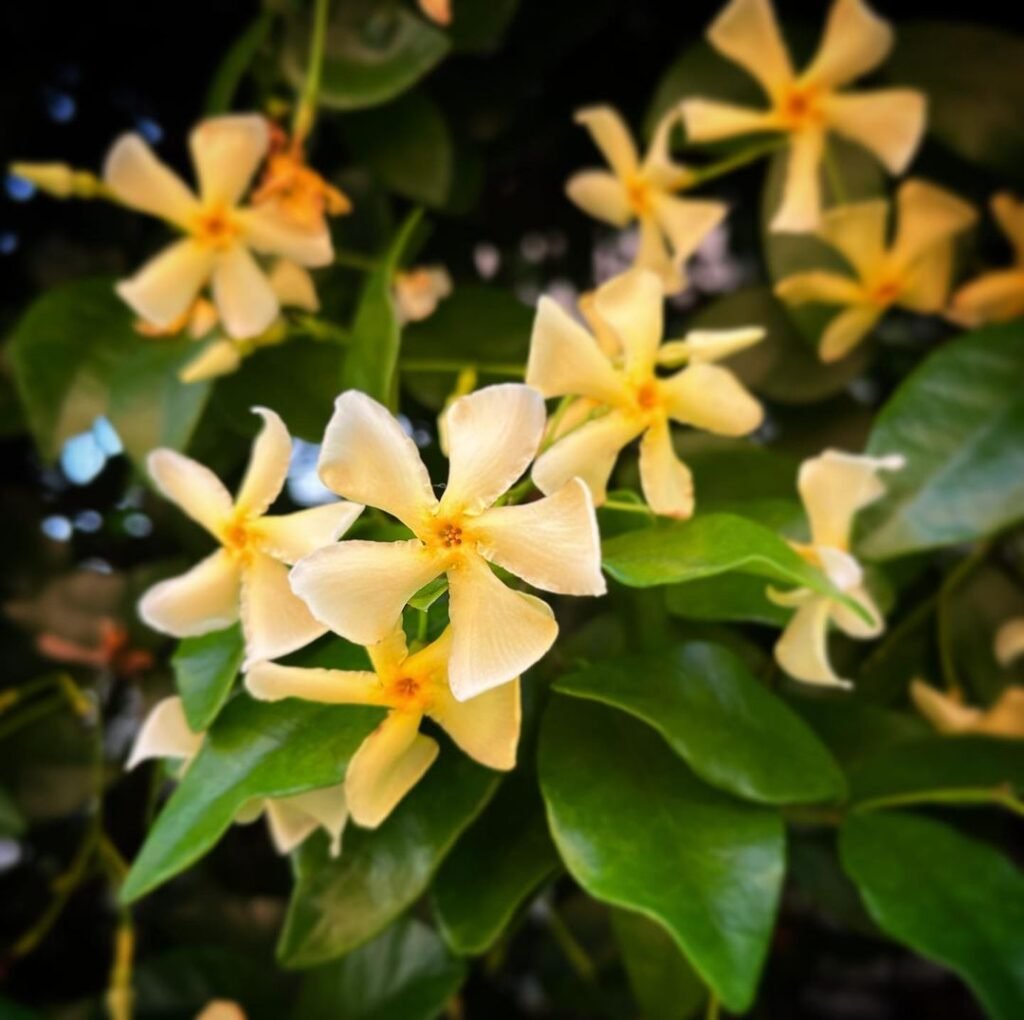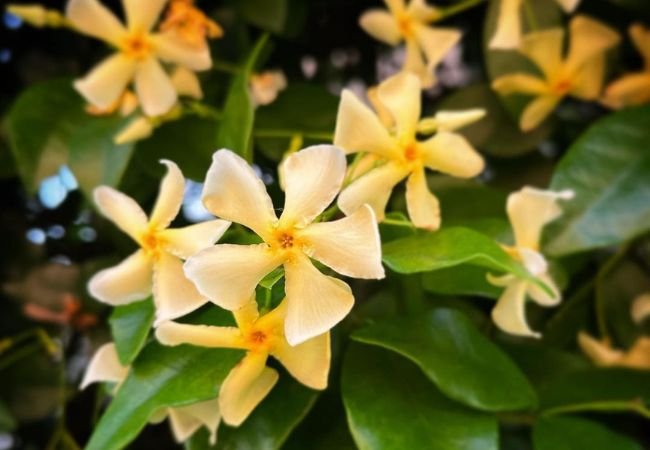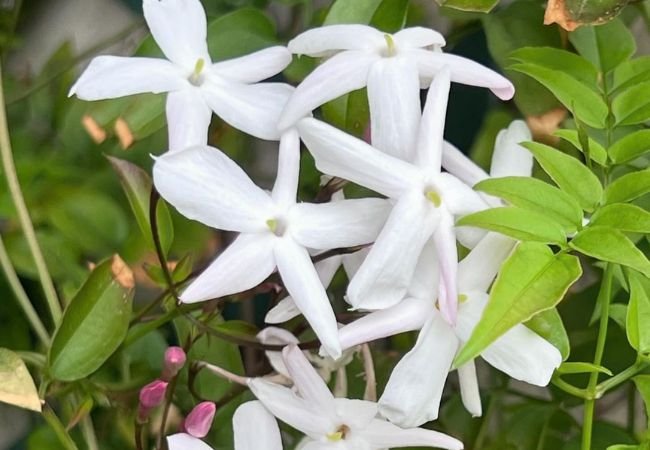Explore Asiatic Jasmine, a versatile and low-maintenance ground cover perfect for various gardening needs. Learn how to grow and care for this hardy plant, and discover its many uses in landscaping and erosion control.
Hey there, fellow garden lovers! I’m Ashley Scott, and I’ve been gardening for over 10 years. If you’re like me, you’re always on the lookout for plants that can add beauty and functionality to your outdoor spaces—especially those tricky shaded areas where grass just won’t grow. That’s where Asiatic Jasmine comes in. It’s a fantastic ground cover that’s not only easy to care for but also adds a lush, green carpet to your garden. And yes, it even produces small, fragrant flowers!
You might have come across searches like “Asiatic Jasmine flower,” “white Asiatic Jasmine flower,” or even “buy Asiatic Jasmine flower” online. But here’s the thing: while Asiatic Jasmine does produce flowers, they’re not the main reason people love this plant. In this article, I’ll dive into everything you need to know about Asiatic Jasmine, from its flowers to its care, and even how to propagate it. Whether you’re a seasoned gardener or just starting out, this guide will help you make the most of this versatile plant.
What is Asiatic Jasmine?

What is Asiatic Jasmine? It’s a question I get a lot, and I’m happy to clear it up. Asiatic Jasmine (scientific name: Trachelospermum asiaticum) is an evergreen vine native to Asia, particularly Japan and Korea. Unlike other jasmine plants known for their blooms, like the fragrant Jasminum species, this one is grown mostly for its dense, glossy green Asiatic Jasmine flower foliage rather than its flowers. It’s a top choice for ground cover, especially in shaded spots where grass struggles.
I first stumbled upon Asiatic Jasmine when I needed something to cover a shady area under a big oak tree in my yard. Grass wouldn’t grow there, and I was tired of pulling weeds. This plant was a game-changer! Its ability to form a thick, lush carpet of greenery makes it a favorite for gardeners across the USA, especially in warmer climates.
Key Features:
- Foliage: Dark green, glossy leaves that stay evergreen in mild winters.
- Growth Habit: Slow to start but eventually forms a dense mat.
- Uses: Great for ground cover, borders, or even as a climbing vine with support.
Want more ideas for shady spots? Check out my article on Best Shade-Loving Ground Covers over at USA Garden Hub.
Does Asiatic Jasmine Flower?
Here’s a big question: Does Asiatic Jasmine flower? Yes, it does! If you’re searching for “does Asiatic Jasmine have flowers” or “Asiatic Jasmine flower,” you’re probably wondering about its blooms. The plant produces small Asiatic Jasmine flowers that are white, star-shaped, and fragrant, typically appearing in early summer. But here’s the catch—they’re not the main attraction.
In my garden, the flowers are more of a bonus than the star. One summer morning, I caught a faint, sweet scent while walking by my Asiatic Jasmine bed. I had to peek under the leaves to spot those tiny white Asiatic Jasmine flowers. They’re lovely, but I grow this plant for its reliable greenery, not its blooms.
Characteristics of Asiatic Jasmine Flowers
So, what do Asiatic Jasmine flowers look like? Let’s break it down:
- Color: White (that’s why you’ll see searches for “white Asiatic Jasmine flower”).
- Size: Small, about 1 inch across (perfect for “size Asiatic Jasmine flower” queries).
- Shape: Star-shaped with five petals.
- Fragrance: Lightly fragrant, especially in the morning—think subtle perfume Asiatic Jasmine flower.
- Bloom Time: Early summer.
These small Asiatic Jasmine flowers are pretty but not as flashy as other jasmine varieties, like the Common Jasmine known for its bold scent. If you’re after a plant with standout blooms, this might not be it. But for a hardy ground cover with occasional floral charm, Asiatic Jasmine nails it.
How to Care for Asiatic Jasmine
Caring for Asiatic Jasmine is a breeze, which is why it’s one of my go-to plants. Here’s how to keep it thriving:
Planting
- When to Plant Asiatic Jasmine: Spring or early fall is ideal. This timing helps the roots settle before hot summers or cold winters hit.
- Soil: It likes well-draining soil but adapts to clay or sandy types too.
- Sun/Shade: Partial to full shade is best, though it can handle some sun. It’s perfect for outdoor Asiatic Jasmine flower setups in shady yards.
Watering
- First Year: Water regularly to help it establish.
- After That: It’s drought-tolerant and only needs water during long dry spells.
Fertilization
- You don’t have to fertilize, but a balanced, slow-release fertilizer in spring can boost growth.
Pruning
- Trim or mow it in late winter to about 4 inches to keep it tidy. I use a weed whacker for mine—it’s oddly satisfying!
For more detailed Asiatic Jasmine plant care, check out this guide from Clemson University’s Cooperative Extension.
Propagation of Asiatic Jasmine
Want more Asiatic Jasmine in your yard? Asiatic Jasmine propagation is super easy. Here’s how I do it:
- Cuttings: Snip 4-6 inch pieces from healthy stems in spring or summer.
- Rooting: Pop them in moist potting soil or straight into the ground.
- Watering: Keep the soil damp until roots form—usually a few weeks.
You can also divide it by digging up a chunk with roots and replanting it elsewhere. I’ve used this trick to spread mine along a shady fence line.
Need more propagation tips? See my guide on Propagating Ground Covers.
Common Questions About Asiatic Jasmine
Let’s tackle some popular questions I’ve seen pop up:
Can I Grow Asiatic Jasmine Indoors?
Not really. Indoor Asiatic Jasmine flower searches come up, but it’s not suited for inside—it’s too vigorous and loves outdoor shade. Try Pothos instead for indoors.
What’s the Size of Asiatic Jasmine Flowers?
They’re small—about 1 inch across. That’s your answer for “size Asiatic Jasmine flower.”
Is There a Black or Brown Asiatic Jasmine Flower?
Nope! Black Asiatic Jasmine flower or brown Asiatic Jasmine flower don’t exist—it’s always white.
What’s the Meaning of Asiatic Jasmine Flower?
There’s no deep “meaning Asiatic Jasmine flower” symbolism. It’s prized for practicality, not poetry.
Does It Come in Variegated Forms?
Yes! Flowerwood variegated Asiatic Jasmine has green-and-white leaves for extra flair.
Where to Buy Asiatic Jasmine
Ready to get some? Here’s where to find Asiatic Jasmine flower for sale:
- Local Nurseries: Most carry it—call ahead to check.
- Online: Try Amazon for “Amazon.in Asiatic Jasmine flower” (US shipping), Etsy for “Etsy Asiatic Jasmine flower,” or Plants by Mail.
Price Asiatic Jasmine flower varies—expect $10-$30 for a small plant, depending on size and source. Look for healthy plants and read reviews Asiatic Jasmine flower before buying online.
For more buying tips, see Purdue University’s Plant Shopping Guide.
Conclusion
Asiatic Jasmine is a stellar pick for anyone wanting a low-maintenance, shade-loving ground cover. Its small Asiatic Jasmine flowers add a nice touch, but the real magic is in its lush, evergreen leaves that turn bare spots into green havens. Whether you’re tackling a shady corner or just want something easy, this plant delivers.
I hope this guide answered your questions about the Asiatic Jasmine flower, from “what is Asiatic Jasmine” to “when to plant Asiatic Jasmine.” Have more? Drop a comment below or explore more at USA Garden Hub. Happy gardening!






